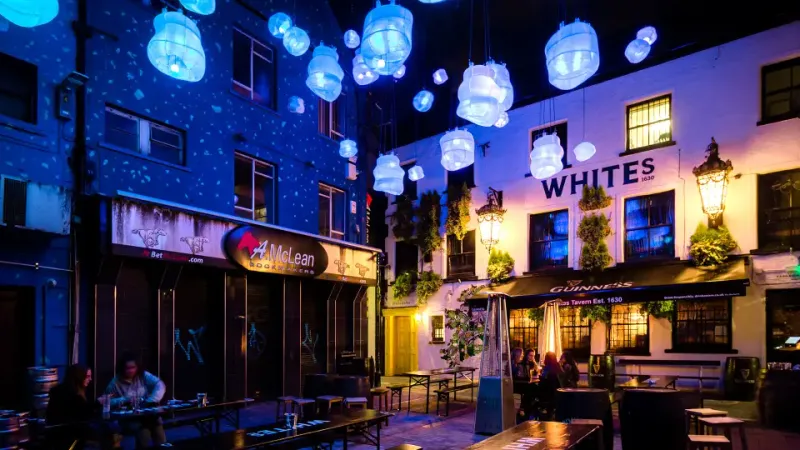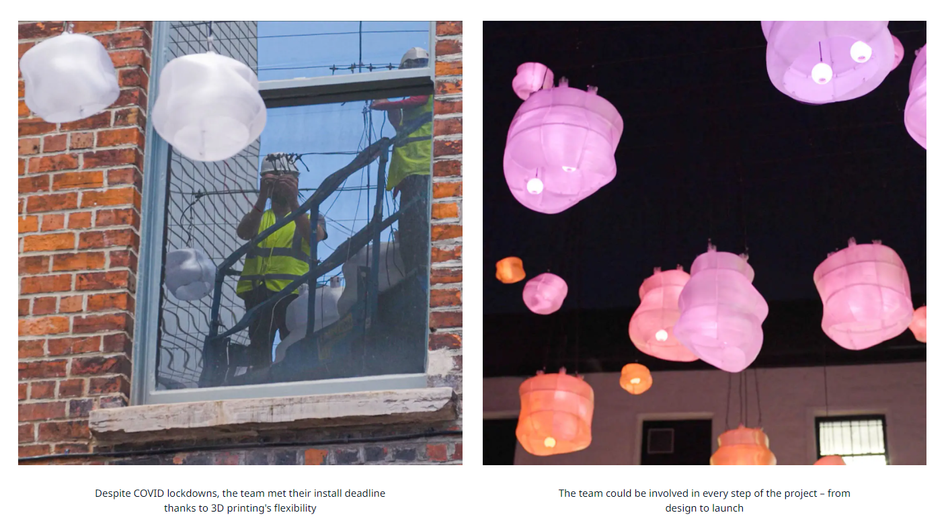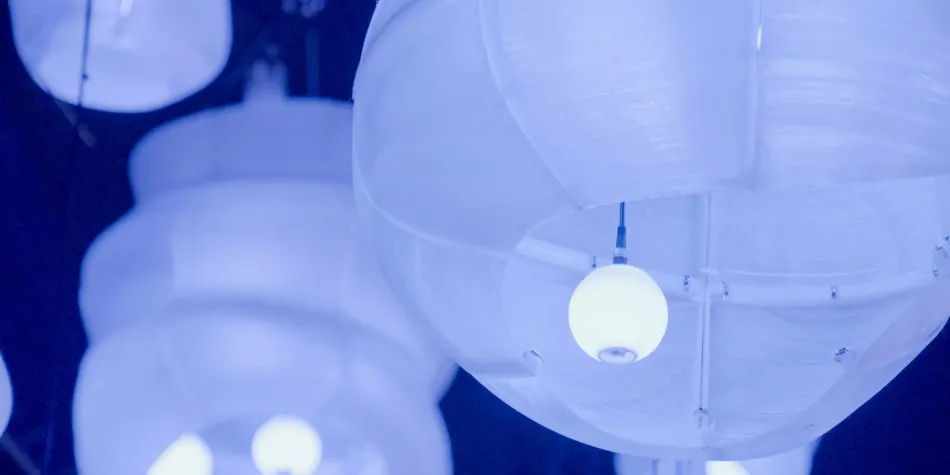Urban Scale Interventions: 3D printing sustainable lighting installations
3D printing offers a new and accessible way to put manufacturing back in the heart of young people in Belfast, who aspire to design and reimagine the future.

Urban Scale Intervention won a Placemaking Award for the Wine Cellar Entry installation
Away from the street and through a dark, cobbled alleyway, the only footsteps you hear are yours.
Suddenly, the narrow passage opens up to a small square where signs of life are eerily few – even for COVID times. A bookmaker, two garbage bins, and an empty bar. Below the sign saying "White's Tavern (Est. 1630)" is written "God knows how we've survived this long in this country".
Known as the "Wine Cellar Entry", this forgotten space in Belfast, Northern Ireland is one of seven which Urban Scale Interventions (USI) was commissioned to transform.
With a people-centered design philosophy, the USI team brought the community together to inform every decision made. In a series of public workshops, they asked over 1,500 residents questions to solve one riddle:
How would you use lighting to bring a sense of belonging or hope to a city?
Four co-design principles came to light from the answers (pun intended) – to create experiences that were "sustainable, playful, interactive, and safe".
3D printed using Ultimaker, their (now award-winning) installation would create a focal point that illuminates one of the hidden gems of Belfast's rich merchant history.
People-first design
Those same design principles led Ralf Alwani, Co-Founder of USI, to explore using FFF 3D printing as a safe, accessible production technology.
"It gives people like us who aren’t advanced manufacturing experts an opportunity to get into the process of design-to-manufacture."
The team quickly realized other benefits. With the ability to visualize the entire installation in 3D using CAD, they gained the flexibility to test sculptural ideas and then easily translate those designs to the 3D printer. Best of all? This production process effectively negated human error in comparison to traditional model-making.
Art Director, Greg Edwards, elaborated, "For us it was a whole new organic design process. We were able to literally take these objects from the design table to the street."
But what exactly are these objects?
An ocean of floating orbs
Different ideas for suspended shapes were tested, including wine bottles. (This was after all the Wine Cellar Entry.)
Finally, the team decided on an evocative "ocean orb" design that links to Belfast's maritime heritage and the location's history as a fish market.

The team created iterations quickly on site allowing them to explore more design options. Alwani explains:
"We could constantly change parts, adapt them, and use them in a way that improved our design. The ability to experiment throughout the making process completely changed the output of the product."
There are 43 orbs in total, in 3 sizes. Because even the smallest size was too large for the 3D printer's 330 x 240 x 300 mm build volume, the orbs were 3D printed in sections. The small sizes had 3 sections and the larger size had up to 15 sections. All in all, roughly 450 sections had to be accurately 3D printed within a tight deadline.
Meeting deadlines with 3D printing
The workhorse machines chosen for this big challenge? Three Ultimaker S5 printers, supplied by reseller 3DGBIRE.
"With the Ultimakers working in the background, it was almost like having an extra pair of hands. This allowed us to progress other aspects of the project," said Project Architect, Lorna McCarten.
This manufacturing flexibility was crucial when a new wave of COVID restrictions threatened to delay the project. The team had been working out of an old linen mill in the center of Belfast. But the compact, modular nature of the Ultimakers meant production could continue. Alwani said:
"The ability to set the Ultimaker S5 up anywhere was really handy. When lockdown came, we moved to the spare room in my house because we had a deadline to meet and and there we could continue manufacture."
And when that deadline came, the USI team found that 3D printing had enabled their deep intimacy with the project in a way they never expected.
Graphic Designer, Rosanna O’Kane, said: "3D printing allowed our team to be hands-on every step of the way. From design to fabrication to installation. So we knew everything about the project and could problem-solve more easily along the way."

Simple, sustainable, single material
As well as reducing environmental impact with local manufacturing, USI went further to pursue their principle of sustainability.
They chose to 3D print the orbs using Filamentive Translucent PETG (and its click-and-print settings found on Ultimaker Marketplace). Wound on a cardboard spool, a high percentage of this filament is made from recycled material – plastic waste that would otherwise go to landfill. For every 1 kg of material sold, Filamentive also plants trees to offset at least 1 kg of CO2.
Using only a single translucent material meant that the bulbs inside each orb could dynamically change color in keeping with a soundscape specifically composed for the installation.
Recommended reading: How to 3D print clear plastic parts
The overall effect created a new sense of place and an instantly instagram-able experience for everyone share.
A brighter future for Belfast
And the timing could not have been better. The installation didn’t just transform the site into a destination that people can explore and enjoy. It has also given back to the hospitality industry – one of the sectors hardest hit by COVID.
With USI's work opening the eyes of more people about the possibilities of additive technology, Alwani sees a positive outlook for the city's creative community:
“3D printing offers a new and accessible way to put manufacturing back in the heart of young people in Belfast, who aspire to design and reimagine the future.”

